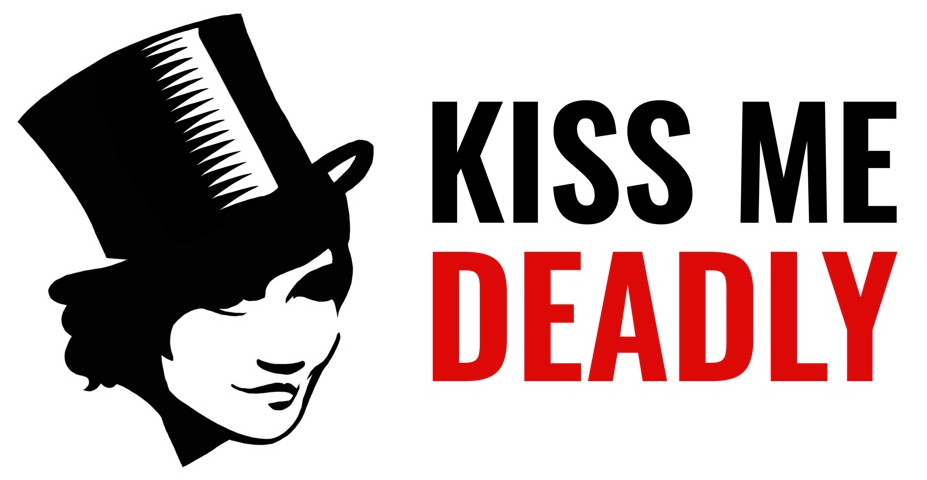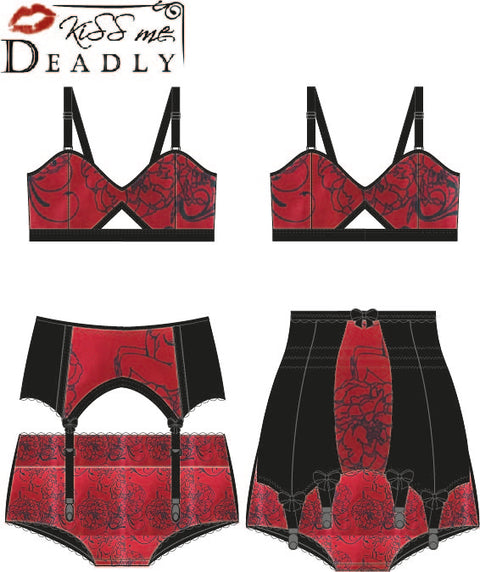As some of you know, Lou has been working with us a while doing patterns, making corsets and getting frustrated with factories (a popular pastime in lingerie brands).
This year we've been having issues getting factories to sample new things - a very common problem, as doing new things is very time-consuming, dissatisfying and expensive. Factories like you to order the same thing in maybe a different colour, thanks. So at the start of September, Lou went to Latvia, to meet the factory that can actually make underwired bras. If you noticed we've been a bit light on the ground with those this year, congrats! You're absolutely right, and it's because the amount we had to order with our old factories got too big, so we've been trying to move, and it's been a bit . . . fraught.
You can watch Lou talking about it above or read below!
"I have spent a week on the Latvian coast in Liepaja, on an adventure to take a selection of new designs and drawings to the factory we're working with on femme fatale lingerie sets.

The new range that should include a revamped overwire, if all goes to plan!
Designing a lingerie range or a single garment is great. It involves doing a technical drawing which shows the exact shape of the garment and highlights any stitching or important design details. Effectively it is a crystal clear diagram of how the design MUST look in the end. These drawings are crucial for communicating designs to factories – lord knows what could come back if you drew something quickly on the back of a cigarette packet with your eyebrow pencil (Catherine's preferred design technique). It sounds simple, and with some fairy dust, everything is wonderful, right?
WRONG.
It’s all very well having mastered the art of Illustrator and Photoshop, but factories will usually require a card pattern to work from, a sample garment to see the construction (and usually how they can do it faster) and to see the quality of the fabric, a technical pack (instruction book) which will contain ANY details about the garment with measurements, specific components, the aforementioned technical drawings (some with colour!) and an accurate construction guide with ideal timings per process.

This range is actually being sampled in two places, one in silk in the UK for tiny quantities, and one in satin in Latvia for larger quantities.
This has to be done for every single garment which is taken to sampling and then into production. It can take months to organise and to perfect down to the last millimetre. On top of this, there is one very crucial detail which is often overlooked and that is the language barrier. Naturally, as a British brand, that's pretty much our own faults, since like most folk in England we're largely monolingual, bar Catherine's laughably bad French. This week, I have been lucky enough to have a translator present at all my meetings. Issues such as ‘what colour should this suspender clip and what width’ was solved within minutes, rather than weeks (and just as a point, this was written in the tech pack).
I have ‘non fashion background’ friends who ask about the conditions of the factories I have worked with, whether they are sweatshops filled with children spending their lives sewing for 20p a day. I can honestly say...no. This is not how it is – in the EU there are rules about these things, and even outside the EU we stick to factories we know (historically they've all had ethics certificates).
The factories I work with are clean and tidy; the employees are happy, looked after and paid appropriately. You can rest easy that the garments we manufacture are treated fairly and seemed to enjoy their job!"
Later on Lou is heading to the Phillipines to the factory that makes the rufflebutts, and we have a some styles with our UK factories as well, so keep an eye out for porgress reports!



